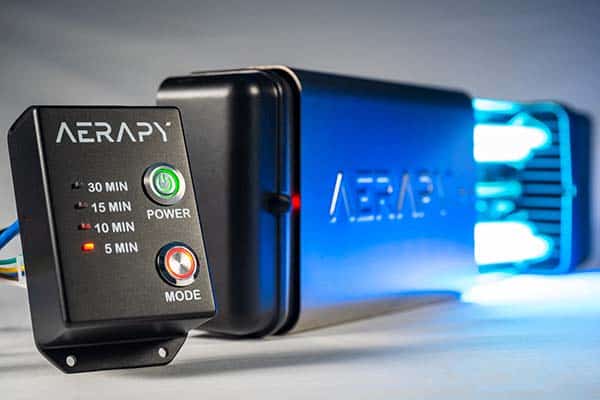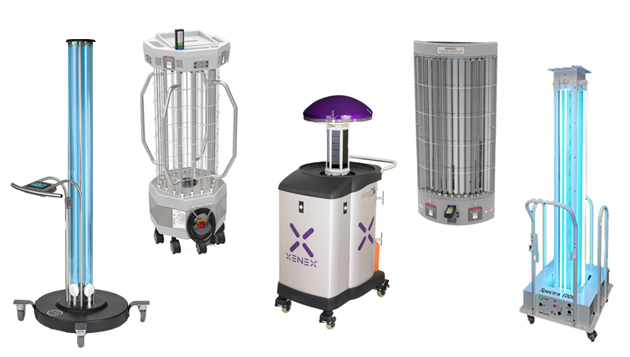Harnessing the Power of UV Surface Disinfection: A Comprehensive Overview for Healthier Spaces
Harnessing the Power of UV Surface Disinfection: A Comprehensive Overview for Healthier Spaces
Blog Article
Unveiling the Perks of UV Sanitation: Ensuring Sanitized and tidy Spaces
In the age of heightened awareness surrounding hygiene and tidiness, the relevance of reliable sanitation approaches can not be overemphasized. While typical cleansing methods have actually long been depended upon, developments in technology have introduced an ingenious solution that guarantees tidy and sanitized spaces: UV sanitation. By utilizing the power of ultraviolet light, this approach has actually obtained recognition for its ability to eliminate hazardous pathogens and supply a detailed sanitization procedure. Nevertheless, the benefits of UV sanitation prolong much beyond its effectiveness. This conversation will certainly check out the science behind UV sanitation, its effectiveness on various virus, its applications in different setups, and the benefits it holds over conventional approaches. Furthermore, we will certainly look into the security factors to consider that need to be thought about when applying UV disinfection. Prepare to reveal a brand-new dimension of cleanliness and uncover the untapped potential of UV disinfection.

The Science Behind UV Sanitation
UV sanitation is a clinically proven technique that makes use of ultraviolet light to remove harmful microorganisms from surface areas and water. The science behind UV disinfection depends on the capacity of UV-C light to harm the DNA and RNA of bacteria, making them incapable to replicate and causing their eventual fatality. UV-C light drops within the wavelength series of 200 to 280 nanometers, which is extremely efficient in ruining germs, viruses, and other virus.
When exposed to UV-C light, the hereditary product of bacteria soaks up the power from the light, resulting in the development of thymine dimers. These dimers disrupt the normal duplication and transcription procedures of the microbes, hindering their capacity to replicate and survive (uv surface disinfection). The DNA and RNA damages caused by UV-C light is dangerous to the microbes, making UV disinfection a dependable and reliable method for eliminating a vast array of virus
UV disinfection is specifically helpful in environments where conventional chemical disinfectants may be ineffective or unwise. It is a non-chemical technique that does not leave any kind of deposits or unsafe spin-offs, making it risk-free for use in food handling, medical care facilities, water treatment plants, and different other sectors. UV disinfection is environmentally pleasant, as it does not add to the growth of antibiotic-resistant microorganisms or various other dangerous pollutants.
Performance of UV Sanitation on Virus
The efficiency of UV disinfection in getting rid of microorganisms has actually been extensively examined and proven in countless scientific researches. UV radiation has the capacity to suspend a variety of bacteria, including germs, viruses, and fungis, by harming their DNA or RNA. This stops them from duplicating and creating infections.
One research study released in the American Journal of Infection Control found that UV disinfection was reliable in minimizing the presence of multiple drug-resistant germs in healthcare facility areas. Another research study conducted by the National Institute for Occupational Security and Wellness demonstrated that UV sanitation was able to eliminate 99.9% of the influenza infection on surfaces.
UV disinfection has actually additionally shown pledge in combating the spread of healthcare-associated infections (HAIs) According to a research released in The Lancet, making use of UV-C light along with typical cleaning procedures substantially minimized the occurrence of HAIs in a medical facility setting.
Moreover, UV disinfection has proven to be reliable against emerging microorganisms, such as the extreme intense breathing syndrome coronavirus 2 (SARS-CoV-2), which causes COVID-19. A research study performed by the National Arising Contagious Diseases Laboratories showed that UV-C light can suspend the infection on surface areas within seconds.
Applications of UV Disinfection in Different Setups
With its tried and tested efficiency in removing microorganisms, UV disinfection has actually description located applications in a variety of setups. UV disinfection is additionally advantageous in water therapy plants, where it is used to eliminate unsafe microbes and offer risk-free alcohol consumption water.
One more crucial application of UV sanitation is in the air filtration sector. UV air purifiers are used in domestic, industrial, and commercial settings to eliminate air-borne bacteria, infections, and mold and mildew spores. This technology is particularly useful in atmospheres where people are more at risk to breathing infections, such as medical facilities, colleges, and office structures.
Additionally, UV disinfection is increasingly being made use of in public transport systems, such as trains and buses, to preserve clean and sterilized areas for travelers. UV light is used to sanitize surface areas and air inside the vehicles, minimizing the threat of spreading out transmittable illness.
Advantages of UV Sanitation Over Conventional Techniques
In comparison to typical techniques, UV disinfection uses a series of distinctive advantages that make it a more effective choice in different markets and settings. One considerable advantage is its efficiency against a wide range of microorganisms, consisting of bacteria, fungi, and viruses. Unlike chemical disinfectants that might have restricted efficacy versus specific virus, UV sanitation is a non-selective procedure that can kill or suspend a wide range of hazardous organisms.
An additional advantage of UV disinfection is its capability to provide reliable and quick sanitation. Typical sanitation techniques usually call for longer call times or multiple actions to attain the wanted degree of disinfection. On the other hand, UV light can give continuous and prompt disinfection, reducing downtime and boosting productivity in numerous applications.
UV sanitation also offers a safe and eco-friendly option to traditional sanitation methods. uv surface disinfection. Unlike chemical representatives, UV light does not leave any type of harmful deposits or byproducts, making it appropriate for usage in delicate atmospheres such as food processing centers, healthcare setups, and water therapy plants
Furthermore, UV disinfection is a cost-effective remedy in the long run. While the upfront financial investment for UV disinfection systems might be greater than standard techniques, the operational prices are generally lower. UV lights have a long life expectancy and call for minimal upkeep, leading to reduced labor and replacement expenses.
Safety Factors To Consider for UV Disinfection
Considering the possible risks associated with UV disinfection, it is necessary to deal with the safety and security considerations associated with implementing this modern technology. UV sanitation utilizes ultraviolet light to eliminate or inactivate bacteria, making it a reliable approach for sanitizing numerous surface areas and items. However, it is essential to recognize that UV radiation can likewise position threats to human health if proper precaution are not adhered to.
Primarily, straight exposure to UV radiation can trigger harm to the skin and eyes. Long term exposure can lead to sunburn, skin damages, and even a raised threat of developing skin cancer cells. It her explanation is essential to make certain that UV sanitation systems are properly confined and furnished with safety attributes such as automatic shut-off systems or activity sensing units to stop unintentional exposure.

Moreover, correct training and education are important for those in charge of running UV sanitation systems. They need to be aware of the prospective risks, understand the safety and security procedures, and understand how to manage and preserve the devices appropriately.
Final Thought
In verdict, UV disinfection supplies many advantages in making sure clean and sterilized areas. Its efficiency in eliminating microorganisms has actually been verified through scientific research study. UV sanitation can be applied in numerous setups, consisting of health care centers, food processing plants, and water treatment systems. Compared to standard techniques, UV disinfection has benefits such as faster sanitation times, marginal chemical use, and no hazardous by-products. Safety factors to consider need to be taken into consideration to avoid potential dangers connected with UV direct exposure.
UV sanitation is a scientifically proven approach that makes use of ultraviolet light page to eliminate damaging bacteria from surfaces and water. The DNA and RNA damages triggered by UV-C light is lethal to the microorganisms, making UV sanitation a efficient and trusted approach for killing a large array of microorganisms.
An additional advantage of UV disinfection is its capability to provide quick and reliable disinfection. UV sanitation uses ultraviolet light to eliminate or inactivate microorganisms, making it an efficient approach for sterilizing various surfaces and things. Contrasted to typical approaches, UV sanitation has advantages such as faster sanitation times, very little chemical usage, and no unsafe results.
Report this page